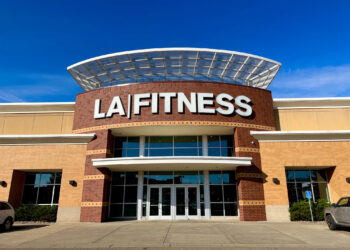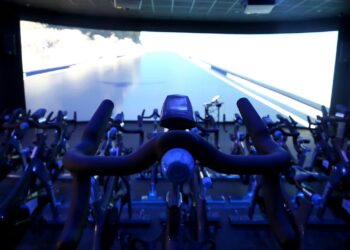Having an apparel shop usually isn’t a gym’s first priority. And why should it be? Members don’t come to your club to shop — they come to workout. However, an apparel shop that is well-managed can successfully improve your club’s brand and boost retention by creating a sense of community in your members, in addition to providing your club with a major profit boost.
For more insight on how to get more of your members to buy some club gear, Club Solutions spoke with Meredith Rosson, the assistant general manager at Cooper Fitness Center, about her best practices for running The Coop, the club’s apparel shop.
CS: What are some best practices for running an apparel shop?
MR: Having a mix of natural talent with our buyer, understanding our members and allowing data to drive our decisions have all helped our boutique succeed. But first, we had to learn our store’s current stats before we could analyze which levers needed pulling to increase sales. These analytics included information about our sales, our expenses, our product management and product value.
The daily analytics included:
- Total sales
- Number of transactions
- Average profit per transaction
- Inventory value
Our monthly and annual analytics included:
- Total sales
- Average number of transactions
- Average profit per transaction
- Average sales breakdown (which category performed well)
- Inventory expense
- Profit margin
- Seasonality reports
- Inventory turn rate
- Aging inventory
You must continuously analyze this data to help you see where improvements have been made or where you need to focus your strategic efforts next.
CS: How can clubs maximize profits?
MR: Take educated risks, align your products with services in the club, make shopping social, and make yourself more available for your customers. For example, if you see a myofascial release class is doing well in the personal training department, selling foam rollers in the store could be a great idea. The next step is to ensure that the trainer leading the class knows about your new product and mentions it at the end of their class to encourage their participants to keep up the good work. And from there, everything from operating hours to social media to online accounts helps clubs increase the chances to make a sale by aligning with their customers’ buying pattern.
CS: How do you decide what to sell? What products do you sell and what’s popular?
MR: Seeking advice from our top customers gives us a pulse on what our promotors would like to see. Research your competitors by asking your loyal customers where else they like to shop and take the time to visit those places in person. This will show you what product assortment they offer and how they merchandise similar products/apparel — plus you can find out how they learn more about their customer by being one yourself.
The final piece of the puzzle is knowing your equilibrium. This means knowing the right capacity for your store’s size without taking away from the shopping experience, paired with knowing the sweet spot of product pricing your customer base can afford. You want to maximize their spending without pricing items out of their budget, leaving you with excess inventory that you can’t sell.
Don’t be afraid to try new products/apparel but be prepared to measure the success to see if these new lines should become staples. The best buyers for stores are always on the hunt for new trends and can identify one that will appeal to their customers months before inventory will land in the store. Customer preferences change often! Timing your customers’ trend interest and inventory landing timing is important. If you are too early, the trend won’t be adopted, and if you are too late to a trend your buyers have already purchased from another retailer.
Stay ahead in the fitness industry with exclusive updates!
Bobby is the former assistant editor of Club Solutions Magazine.










